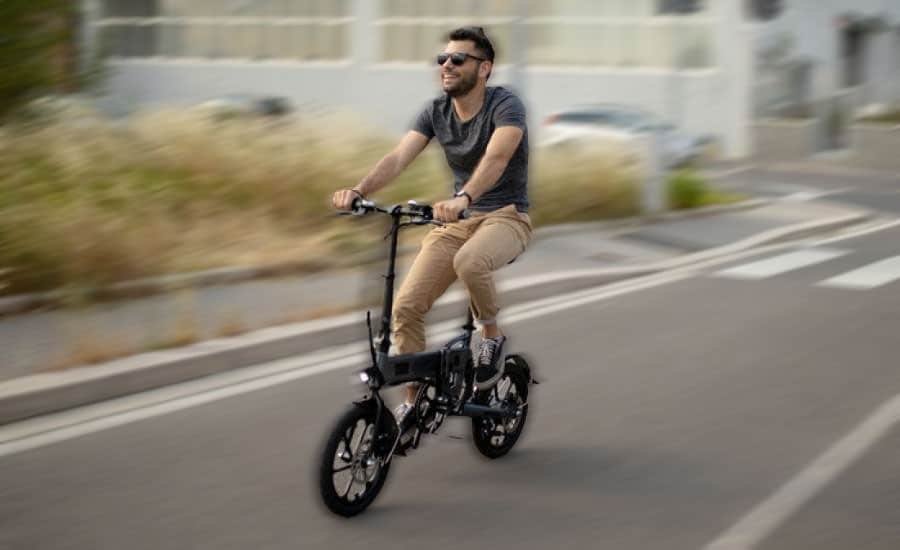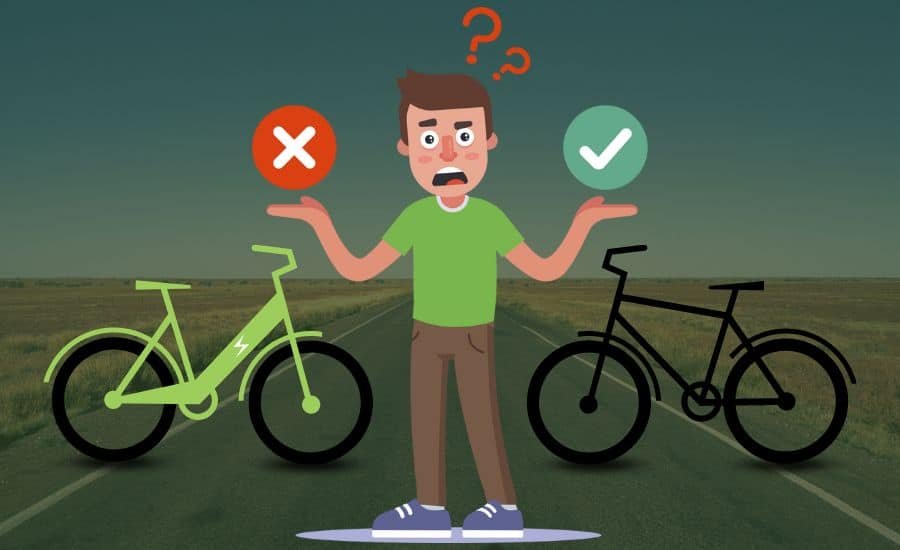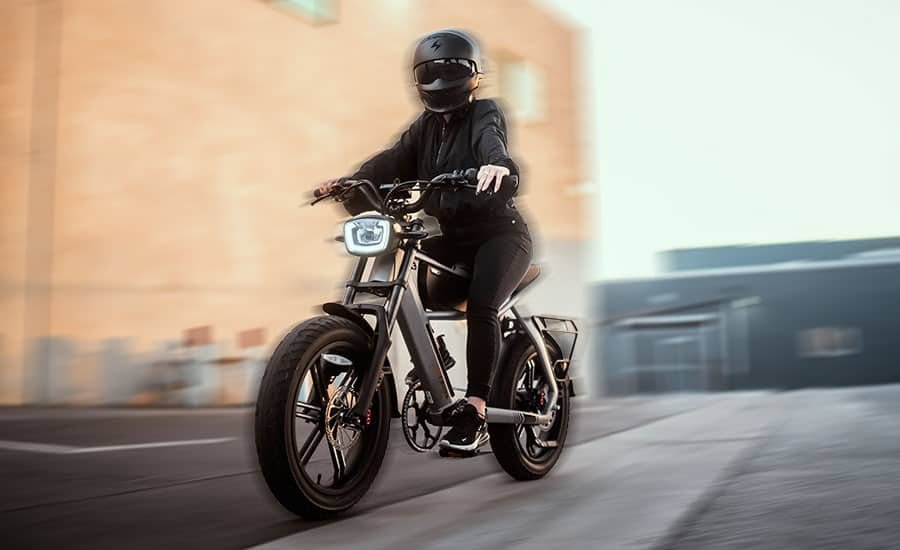Are you tired of arriving at your destination sweaty and out of breath after cycling? Or do you want to enjoy the outdoors without the physical exertion of a traditional bike ride? The solution may be an electric bike. But, are electric bikes faster than regular bikes? According to a study by the Transportation Research and Education Center, e-bikes can reach an average speed of 20 mph, while traditional bicycles average about 12.5 mph.
This begs the question, are electric bikes the key to a faster, more efficient, and less strenuous commute? In this post, we’ll explore the speed capabilities of both electric and regular bicycles, highlight some common problems faced by cyclists, and provide some context on the growing trend of electric bikes
How Fast Are Electric Bikes?

Electric bikes, also known as e-bikes, come in a range of speeds depending on their design and classification. E-bikes’ speeds range from 20 miles per hour (31 kilometers per hour) to 28 miles per hour (45 kilometers per hour).
It’s worth noting that e-bike speeds can also be affected by factors such as the weight of the rider, the terrain, and the condition of the bike. Some e-bikes are designed for off-road use and may have higher top speeds, while others are designed for city commuting and may have lower top speeds for safety reasons.
In general, e-bikes are faster than traditional pedal-powered bikes and can help riders cover greater distances with less effort. However, it’s important for riders to obey local laws and regulations regarding e-bike use, as well as take appropriate safety precautions such as wearing a helmet and using lights and reflective gear when riding at night.
The Different Classes of Electric Bikes

In the United States, there are three classes of electric bikes, or e-bikes, which are defined by law:
Class 1 E-bikes
These bikes are equipped with a motor that provides assistance only when the rider is pedaling, and the maximum assisted speed is 20 miles per hour (32 kilometers per hour).
Class 2 E-bikes
These bikes are equipped with a throttle that allows the rider to control the motor without pedaling, and the maximum assisted speed is also 20 miles per hour (32 kilometers per hour).
Class 3 E-bikes
These bikes are equipped with a motor that provides assistance only when the rider is pedaling, and the maximum assisted speed is 28 miles per hour (45 kilometers per hour).
It’s worth noting that different countries may have different classifications for e-bikes, and that these classifications can affect where and how e-bikes can be used. In general, e-bikes are a growing trend in transportation and recreation, as they offer a more eco-friendly and efficient alternative to traditional gasoline-powered vehicles and provide riders with a fun and convenient way to get around.
E-Bike vs Normal Bike Speed

In general, e-bikes can reach higher speeds than traditional pedal-powered bikes. E-bike riders tend to travel at an average speed of around 20 miles per hour (32 kilometers per hour), while traditional bike riders tend to travel at an average speed of around 12 miles per hour (19 kilometers per hour). This suggests that e-bikes can offer a faster and more efficient mode of transportation, particularly for longer distances or hilly terrain.
It’s worth noting, however, that e-bikes are subject to different speed regulations than traditional bikes. In the United States, for example, e-bikes are classified into three categories based on their maximum assisted speed. In the long run, whether an e-bike or a traditional bike is faster depends on a variety of factors, including the rider’s strength and fitness level, the terrain, and the purpose of the ride. However, e-bikes can offer a faster and more convenient mode of transportation for those who want to travel longer distances or tackle hilly terrain without exerting as much effort.
Factors That Can Affect the Speed of Electric Bikes and Regular Bikes

There are several factors that can affect the speed of both electric bikes (e-bikes) and traditional bikes. These include:
🔲 Rider’s strength and fitness level: A rider’s strength and fitness level can greatly affect their speed on a bike. A stronger and fitter rider can pedal harder and maintain a faster pace for longer periods of time.
🔲 Terrain: The terrain can also have a significant impact on speed. Uphill terrain can slow down a rider’s speed, while downhill terrain can increase it.
🔲 Rider weight: The weight of the rider can affect a bike’s speed, as it requires more energy to move a heavier load. A heavier rider may find it more challenging to reach higher speeds and may need to exert more effort.
🔲 Aerodynamics of the bike: The design and shape of the bike can affect its aerodynamics, which impacts its speed. Bikes with streamlined designs and reduced wind resistance can reach higher speeds with less effort.
🔲 Gear ratio and shifting efficiency: The gear ratio and shifting efficiency of a bike can affect its speed by determining the optimal gear for the terrain and the rider’s pedaling effort. Properly calibrated gears and smooth shifting can help a rider maintain a consistent speed.
🔲 Pedaling technique: A rider’s pedaling technique can affect their efficiency and speed. Proper pedaling technique involves applying force at the right time during each pedal stroke and maintaining a consistent rhythm. Efficient pedaling can help a rider maintain a higher speed with less effort.
🔲 Wind speed and direction: Strong headwinds can slow down a rider’s speed, while tailwinds can increase it.
🔲 Bike weight and design: The weight and design of a bike can also impact its speed. Lighter bikes tend to be faster, while heavier bikes can be more difficult to pedal and slower.
🔲 Type of bike: The type of bike can also affect its speed. Road bikes, for example, are designed for speed and efficiency, while mountain bikes are designed for rugged terrain and may be slower on flat roads.
🔲 Tire pressure: Proper tire pressure can help increase a bike’s speed, as underinflated tires can create more resistance and slow down a rider’s pace.
🔲 Weather conditions: Extreme weather conditions such as rain, snow, or icy roads can slow down both e-bikes and traditional bikes and make it more challenging to ride safely.
Overall, both e-bikes and traditional bikes can be affected by many of the same factors that impact speed, with e-bikes often offering an extra boost of speed thanks to their motor assistance. However, regardless of the type of bike, a rider’s skill, strength, and fitness level can have a significant impact on their speed and overall riding experience.
Which Should You Buy; A Regular Bike Or An Electric Bike?

Deciding whether to buy a regular bike or an electric bike (e-bike) depends on several factors, including your personal preferences, budget, and intended use.
Here are some points to consider when making your decision:
🔲 Fitness level: If you want to improve your fitness level, a regular bike may be a good choice, as it requires more physical effort to ride. However, if you have physical limitations or are new to cycling, an e-bike can provide motor assistance to help you overcome hills and ride longer distances.
🔲 Commuting: If you plan to use your bike for commuting or running errands, an e-bike can be a more efficient and convenient option, especially if you have a long commute or want to carry heavy loads.
🔲 Terrain: If you live in an area with hilly terrain, an e-bike can help you tackle hills with less effort. If you live in a flat area, a regular bike may be sufficient for your needs.
🔲 Budget: E-bikes can be more expensive than regular bikes due to the added motor and battery. If cost is a concern, a regular bike may be a more affordable option.
🔲 Riding experience: If you enjoy the physical challenge of riding a regular bike, a regular bike may be the way to go. If you prefer a more relaxed and comfortable ride, an e-bike may be a better choice.
The decision to buy a regular bike or an e-bike depends on your individual needs and preferences, in the end. If you’re unsure, consider trying out both types of bikes before making your purchase.
Can an Ebike Go 50 MPH?

In general, electric bikes (e-bikes) are not designed to go as fast as 50 miles per hour (mph). The speed of an e-bike depends on several factors, including the motor power, battery capacity, and local regulations. As we identified before, in the United States, for example, e-bikes are classified into three categories based on their maximum assisted speed, with the maximum assisted speed being 28 mph. However, some states and cities may have different regulations.
It’s worth noting that e-bikes designed to go faster than 28 mph are typically classified as electric motorcycles or mopeds, which are subject to additional safety requirements and licensing. E-bikes that can reach speeds of 50 mph are generally not considered safe for most riders and are not street-legal in many areas.
In summary, while some e-bikes can reach higher speeds than traditional bikes, they are generally not designed to go as fast as 50 mph, and riders should always obey local regulations and safety guidelines.
FAQs
How much faster can an electric bike go than a regular bike?
It depends on various factors, including the motor power, battery capacity, terrain, and rider’s effort. Generally, e-bikes can help riders go faster than traditional bikes, especially on hills and challenging terrain.
What is the maximum speed of an electric bike?
In the United States, e-bikes are typically limited to a maximum assisted speed of 20-28 mph, depending on the class. However, local regulations may vary.
Are electric bikes as fast as motorcycles?
Electric bikes are not as fast as motorcycles. While some e-bikes can reach higher speeds than traditional bikes, they are typically designed for lower speeds and are subject to different safety requirements and licensing.
Do you need a license to ride an electric bike?
In most cases, you do not need a license to ride an electric bike that meets the legal requirements for a bicycle. However, some states and countries may have specific regulations that require licensing for certain types of e-bikes.
What are the factors that impact the speed of an electric bike?
The factors that impact the speed of an electric bike include the motor’s power output, battery capacity, rider weight, pedaling effort, terrain, and wind conditions.
What are the factors that impact the speed of a regular bike?
The factors that impact the speed of a regular bike include the rider’s fitness level, the bike’s weight and design, tire pressure, terrain, and wind conditions.
Can an electric bike go faster than a regular bike?
An electric bike can go faster than a regular bike, depending on the bike’s specifications, the rider’s pedaling effort, and the terrain.

